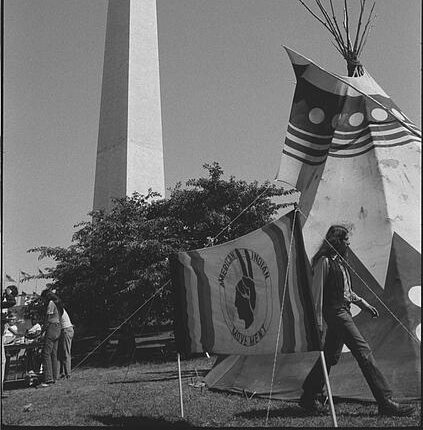The United States built its land base through the acquisition of Indigenous lands. Its many strategies included treaties, warfare, attacks on tribal governance, interrupting kinship networks and systems of knowledge transmission, disrupting Indigenous ties to lands and waters, and narrative erasure, among others. However, these violent narratives often go untold.
Indigenous histories in what is currently the United States precede, co-exist with, and will extend beyond the existence of the United States itself. Learning Indigenous histories is a commitment to reckon with violent histories of genocide, to fight Indigenous erasure, to affirm Indigenous sovereignty, and to counter settler colonial harms.
This site is a project of History 116 Introduction to Indigenous Histories, a recurring Carleton College course first taught in Fall 2020. In this course, students learn about Indigenous histories for those Indigenous nations whose territories are currently occupied by the United States. They balance their inquiry into settler colonial policies with a constant focus on Indigenous sovereignty, resistance, and persistence.
In HIST 116, students commit to sharing their knowledge broadly. They do so in a variety of ways, including blog posts, Twitter threads, radio shows, zines, and many other formats. To reach a broader audience, they share their creations here. You can navigate this site by map, by timeline, or by theme. As each iteration of the class makes their own unique set of contributions to this gathering of knowledge, the site will continue to grow and change. We hope you check back often!
Course land acknowledgement
Carleton occupies Wahpekute and Mdewakanton homelands. Its presence is possible due to the violent removal of Dakota people from this area after decades of coercive and deceitful treaty-making, followed by the exile of Dakota people from Minnesota after the US-Dakota War of 1862.
Today, there are Dakota communities in Nebraska, Canada, North Dakota, and South Dakota; in intertribal urban spaces around the world; and here in Mni Sóta Maḳoce. The Dakota Nations whose territorial boundaries overlap with Minnesota today are the Prairie Island Indian Community, Shakopee Mdewakanton Indian Community, Lower Sioux Indian Community, and Upper Sioux Community.
Through our courses and community collaborations, some at Carleton are working to acknowledge this history and build better relationships with our Dakota neighbors. As we work to interrupt the long-standing, ongoing injustices against Dakota people, Carleton has committed to acts of healing and honest storytelling about this place. This course is one way of continuing that work.
“Tipi with sign “American Indian Movement” on the grounds of the Washington Monument, Washington, D.C., during the “Longest walk” by Warren K. Leffler, Library of Congress. Public Domain.
